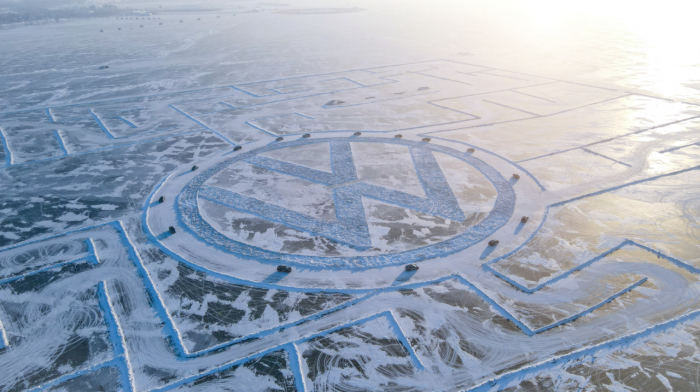“Do you know that the air in Northeast China has a unique ‘cold flavor’…”
“I know, it’s the taste of home.”
If you’ve ever been to Northeast China during the “Thirty-Nine Days” period, I believe you’ll understand this feeling. Shamefully, as a purebred Northeasterner, I have participated in very few winter cultural activities, let alone winter sports such as ice skating and skiing. Why? Don’t ask, the answer is “who would want to go out with you two in such cold weather!”
This time, invited by FAW-Volkswagen, I once again put on thick winter clothing and challenged minus 30 degrees on Changchun Lake in Geelyn, embarking on a trip of “a thousand-mile extreme cold challenge” test drive.
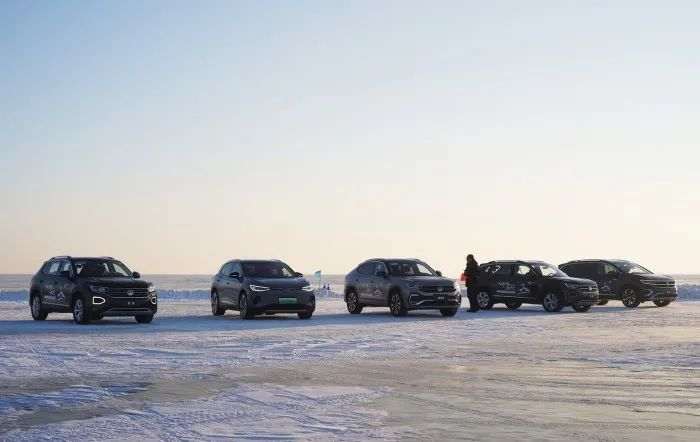
In winter, the vast land is covered in snow, and Changchun Lake is lively with ice and snow due to the extreme cold weather. With the deep roar of the tribe leader’s chant, the challenge projects of the event were initiated, which were the “Biggest Ice and Snow Maze Comprehensive Challenge”, “Forest Snowfield Off-road Challenge”, and “Lake-circling ID. Range Challenge.” The main characters of the test drive were the newly-launched large SUV, the Touareg, and the ID.CROZZ family.
Lake-circling ID. Range Challenge
“If I bought an electric car in Northeast China, would people say I’m crazy?”
“No, because you really are crazy.”
This was a conversation I had with a friend at the beginning of the month. This answer is ultimately due to the widespread belief that “the winter range of electric cars is shortened.” As for the root cause of the problem, it can be roughly divided into three points. Firstly, lithium batteries fear the cold. Under normal temperatures, lithium ions flow from the positive electrode through the electrolyte to the negative electrode during charging, and the opposite path during discharging, the colloquial term for stepping on the accelerator. However, when encountering low temperatures, both lithium ions and electrolytes freeze, greatly reducing the activity of the ions, and the difficulty of passing through the electrolyte also increases. This manifests as a direct decrease in the battery life, which decreases the range. Secondly, heating consumes electricity. Conventional internal combustion engines generate heat to support the temperature inside the vehicle, while pure electric vehicles rely on energy conversion, which further reduces the already limited battery capacity. Finally, low air pressure and high air density in winter increase wind resistance during driving, which also indirectly adds to the power consumption.
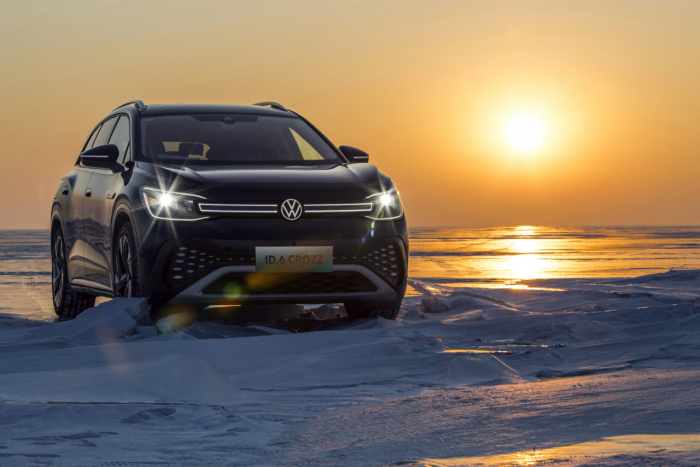
Coincidentally, I’ll take this opportunity to share with you the winter range performance of the ID.6 CROZZ Long-Range PRO version during this event. The planned test driving route is a total of 120km, passing through scenic lake-circling routes, rural roads, national highways, and expressways.
As usual, let’s take a concise look at the product information first:
- Built on the MEB pure electric platform;- The length, width and height of the car are 4891 mm * 1848 mm * 1679 mm, with a wheelbase of 2965 mm;
- Equipped with IQ.Drive driving assist system, supporting L2+ assisted driving function;
- Equipped with an 84.8 KWh ternary lithium battery pack, with a NEDC cruising range of 565 km;
- Using front and rear permanent magnet synchronous motors, with a maximum power of 225 kW, a peak torque of 310 N·m, and a 0-100 km/h acceleration of 9.1 seconds;
- Front MacPherson independent suspension and rear five-link independent suspension.
Before getting on the car, my colleague and I agreed not to set a fixed value to evaluate the car’s cruising range, nor did we need the “golden right foot” to restore the habit of daily driving. After the basic rules were established, we recorded the data before departure: the vehicle was fully charged with a displayed mileage of 272 km, the outdoor temperature was -16 degrees, the temperature inside the car was 23-25 degrees, and the comfortable mode was selected, with only two people in the car and no other items in the back seat. After getting ready and fastening our seat belts, we set off.
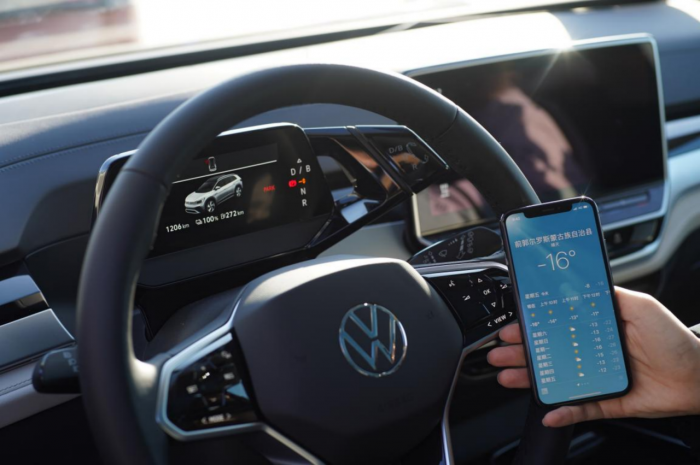
On the first section of the scenic road around the lake, the shimmering scenery of ice and snow was in sight, with the tranquility on the surface of the lake hitting the center of my heart. Without going through any procedures, let me just say it straightforwardly: it was beautiful! After driving on the expressway in the scenic area for about an hour, the displayed power dropped from 100% to 90%, with a remaining mileage of 237 km.
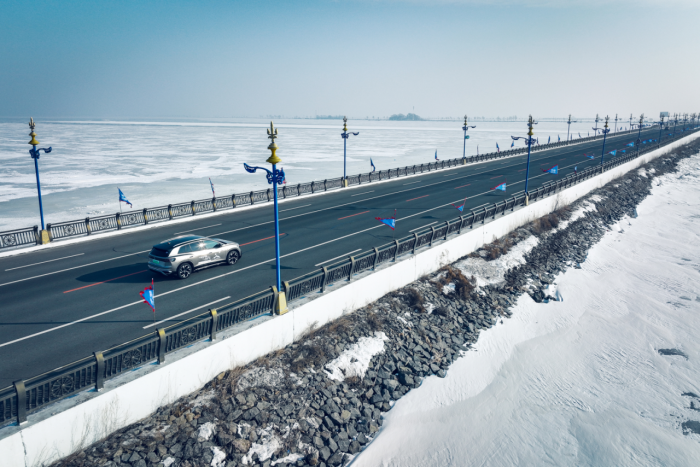
Moving on, we arrived at the second stop, a rural road. Compared with the lake, the road conditions in the countryside appeared somewhat dilapidated, with occasional gullies. The impression that ID.6 CROZZ PRO left me was that it was stable without any feeling of instability, and the whole chassis was solid without any sense of looseness. Moreover, the car felt very similar to a fuel vehicle, which was the inherent advantage of a traditional car company in the process of electrification transformation.
On both sides of the road, the stone mills were competing with the old times, and the newly-renovated poverty-relief houses in the distance were emitting a wisp of smoke, showing respect to our great Party and to the poverty-relief comrades who have been fighting on the front line!
Just as my colleague and I were indulging in how lucky we were to be born under the red flag, the atmosphere in the car was suddenly disrupted by the sound of “pang”. A sheep that had been grazing obediently by the roadside suddenly performed a James Harden-like step-back move and hit the right front side of the car with a loud bang.
“Fantastic, what a move!” I thought to myself, and then quickly got out of the car to apologize to the sheepherder. The sheepherder was not too hard on us, and after staying in place for about twenty minutes, we set off again. At this time, the remaining power was 85%, and the remaining mileage was 229 km.
Continuing to check-in at the third and fourth stops, we came back to the highway surrounding the scenic area, which is also the road for the return trip after passing through the rural road. Because we were delayed for too long just now, the speed slightly increased to between 60-80 km/h, and the air conditioning temperature remained unchanged. In a short while, the remaining battery level reached 80% and the remaining mileage displayed was 218 kilometers, and then 70% remaining equals 202 kilometers.
Possibly due to the acceleration of the vehicle, the speed of battery consumption increased in the latter half of the journey: driving 35 kilometers between 100% and 90%, driving 19 kilometres between 90% and 80%, and 16 kilometres between 80% and 70%, until the vehicle’s remaining battery level was 69% with remaining mileage of 199 kilometres. The activity ended, and the actual driving distance of the road test was 73 kilometre (because of taking the wrong exit and not completing the whole journey – -!), and power consumption was not accurate due to drifting in the snow with the car the previous day; therefore, it cannot be used as a reference.
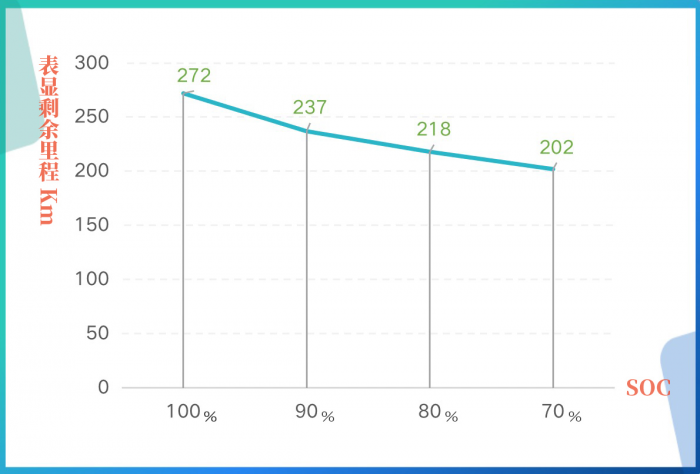

In summary, the displayed endurance of ID.6 CROZZ PRO in Northeast China in the winter with a temperature of minus twenty degrees is less than the NEDC endurance: 272 kilometers compared with 565 kilometers, about 50% less. However, this cannot be too precise. On the one hand, the working conditions of NEDC are idealistic and unrealistic. On the other hand, it is indeed too cold… Nevertheless, during a two-and-a-half-hour journey, ID.6 CROZZ PRO is quite good in terms of accurate endurance. Part of the instantaneous power consumption will be filtered out with higher battery levels, and the relatively stable data is mainly displayed. When the battery level decreases, the weight of the instantaneous power consumption will be increased, allowing users to see the remaining mileage more clearly, avoiding being stranded on the road.
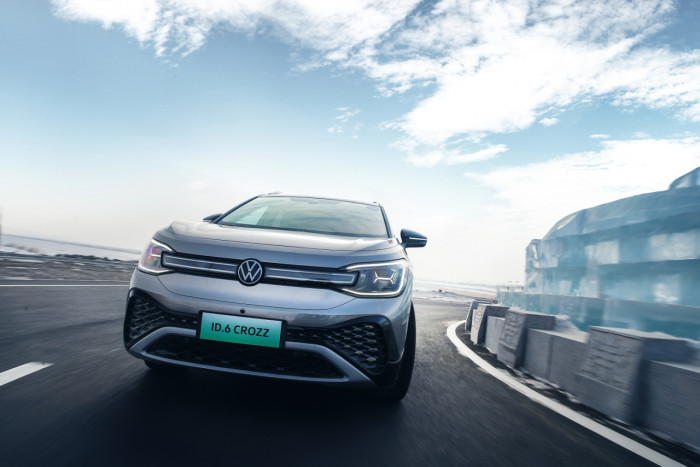
As to whether to buy it in Northeast China, it may need to be defined according to the circumstances. First, there is no need for commuting between cities in winter, only for city use. Second, if the actual endurance of ID.6 CROZZ PRO in summer is around four to five hundred kilometers, this range can cover the distance between the three provincial capitals in Northeast China and the distances between cities within each province. If it meets these two applicable ranges, I think purchasing consideration can be taken.
ID.6 CROZZ PRO – A Spacious Family Car with a Solid Performance
Talking about the entire product, ID.6 CROZZ PRO is a car that meets the space needs of families. The front and rear seats are spacious and comfortable. The 5.3-inch instrument panel and gear selection are also exquisite. The suspended 12-inch central control screen has a clear display, but in terms of intelligence, it is relatively simple in terms of functionality and the screen displays with a higher level of hierarchy. The screen is also considered slightly inferior when compared to some new forces. In terms of the power system, it satisfies customers’ needs without being too aggressive. It caters to every passenger, as the vehicle won’t have any extreme acceleration performance, considering electric cars’ power control. The driving experience is particularly suitable for users who have experience driving fuel vehicles with a solid chassis calibration, which reduces the abruptness feeling that often happens while driving electric cars.
Ultimate Ice and Snow Maze Challenge
Regardless of how cold it may be outside the window, the fish and meat in the iron pot warm the stomach, and the cold disappears without a trace. Chunks of tofu are soaked in it and this mixture, which contains the year’s precipitation of a delicious taste. The enthusiasm in the hot pot and the white mist rising from the stove, all evoke the winter feelings of Chagan Lake.

After lunch, the afternoon snow maze challenge began, inviting participants from the flagship edition, the Ulterior 530TSI, wearing “spiked boots”.
Here are the product highlights:
It has a length * width * height of 5152 mm * 2002 mm * 1792mm, with a wheelbase of 2980 mm;
It is currently the largest SUV within Volkswagen’s lineup, available in 6 and 7 seat configurations;
Built on the MQB41B platform, it has an EA390 V6 2.5T engine, with a maximum power of 220 KW (299 Ps) and a maximum torque of 500 N·m;
The DQ501 seven-speed wet dual-clutch transmission, the sixth-generation BorgWarner-Haldex differential, and the DCC Dynamic Chassis Control System;
The 10.25-inch LCD instrument panel and the 12-inch central control screen are integrated;
Equipped with the IQ.Drive driving assistance system, which supports L2+ assisted driving functions.
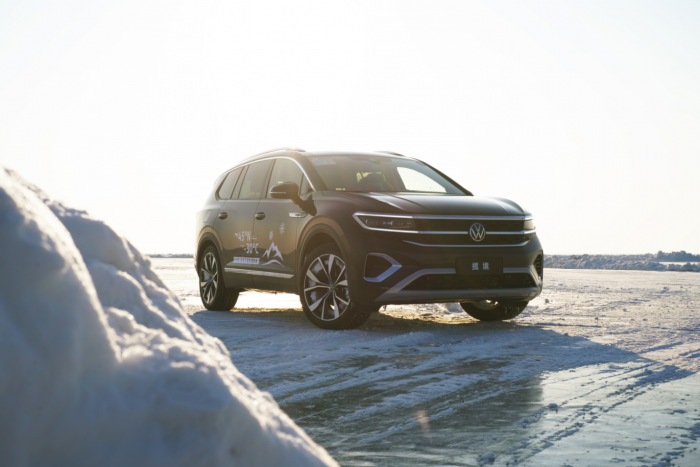
When we arrived at the ice surface, there wasn’t a minute to spend outside the vehicle. After getting familiar with the primary training such as figure-eight maneuvers around the pylons, the coach took us to the “high-speed turn circle.” Initially, I was worried that this large SUV that was over 5 meters would be too clumsy, but it turned out to be stable.
 TSC and ESP intervene very linearly in bends, not suddenly cutting off all the power of your vehicle, but pulling the car back on track before losing control. As long as the throttle is controlled, it is easy to control the body even when driving on ice and snow for the first time, providing some fun of handling, which is endless.
TSC and ESP intervene very linearly in bends, not suddenly cutting off all the power of your vehicle, but pulling the car back on track before losing control. As long as the throttle is controlled, it is easy to control the body even when driving on ice and snow for the first time, providing some fun of handling, which is endless.
The V6 power of the RAV4 responds very positively when slowing down or accelerating, with ample torque performance. The acceleration out of bends has a very good power connection, and the feeling of this large displacement is really fascinating.
Next stop, we arrived at the largest ice and snow maze, which was planned by the team members themselves and took two days to complete on the ice. Finally, the snow on the shore was transported to build the maze step by step. When entering the maze, the red, yellow, and blue flags at the entrance represented three routes. Randomly entering one route, there were different exit directions inside. On my suggestion, we drove around for 15 minutes and then came back.
My colleague in the passenger seat said helplessly, “You choose first, let’s go in the opposite direction, we will definitely get out.”
I said, “Youth is a maze of constantly encountered obstacles. Although the process is full of frustrations, we can eventually find a way out.” We finally chose the opposite direction, and indeed the other two routes were much smoother.
As the high-latitude regions get dark early, we began to return around four o’clock. Perhaps the sun bid farewell to us and bloomed brilliantly on the car body. As the guest of this event, not only did I have a deeper experience of the quality and driving performance of FAW-Volkswagen, but also gained a new perspective on traditional old-school car companies in the field of pure electric models.
This article is a translation by ChatGPT of a Chinese report from 42HOW. If you have any questions about it, please email bd@42how.com.
